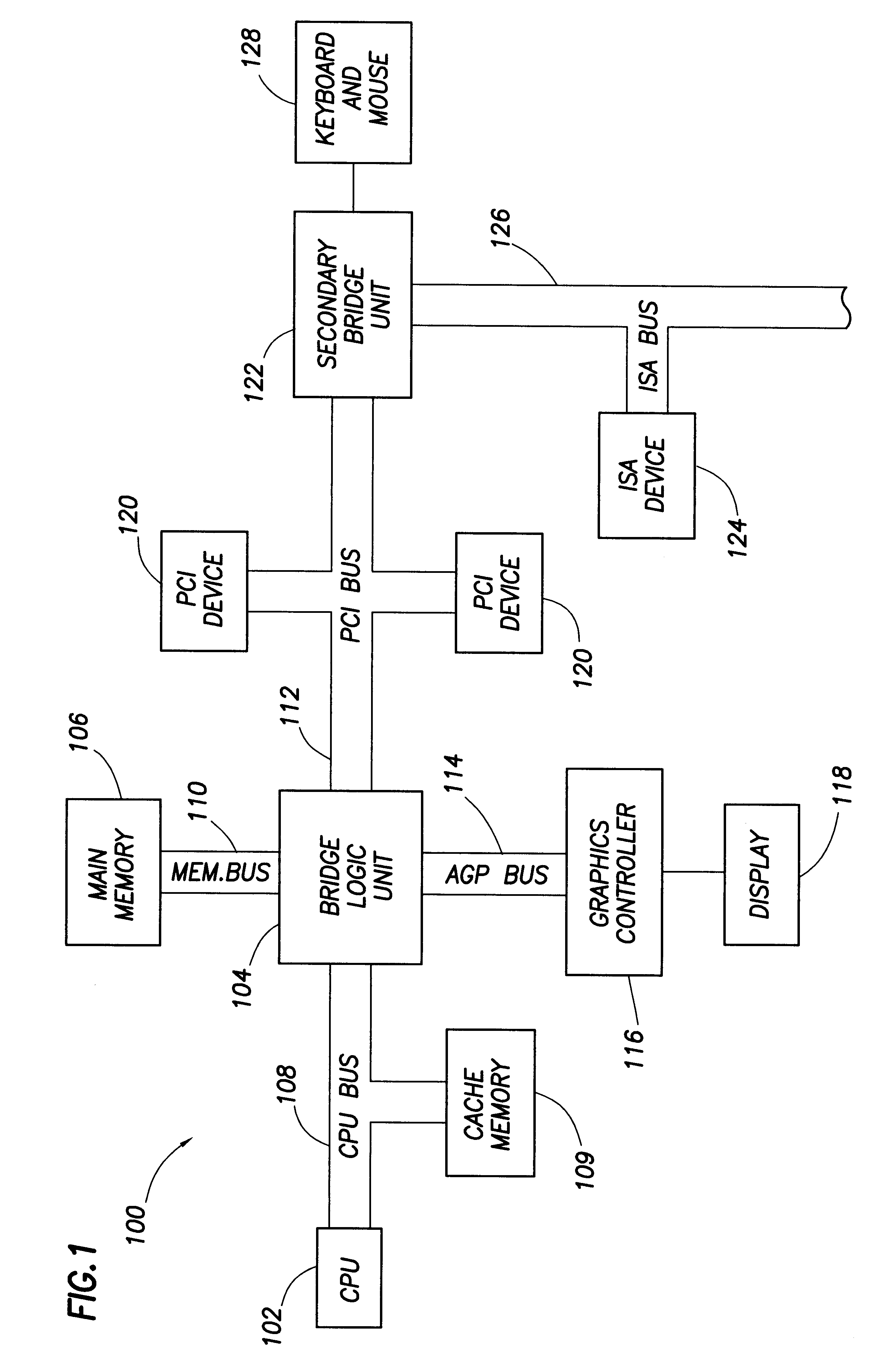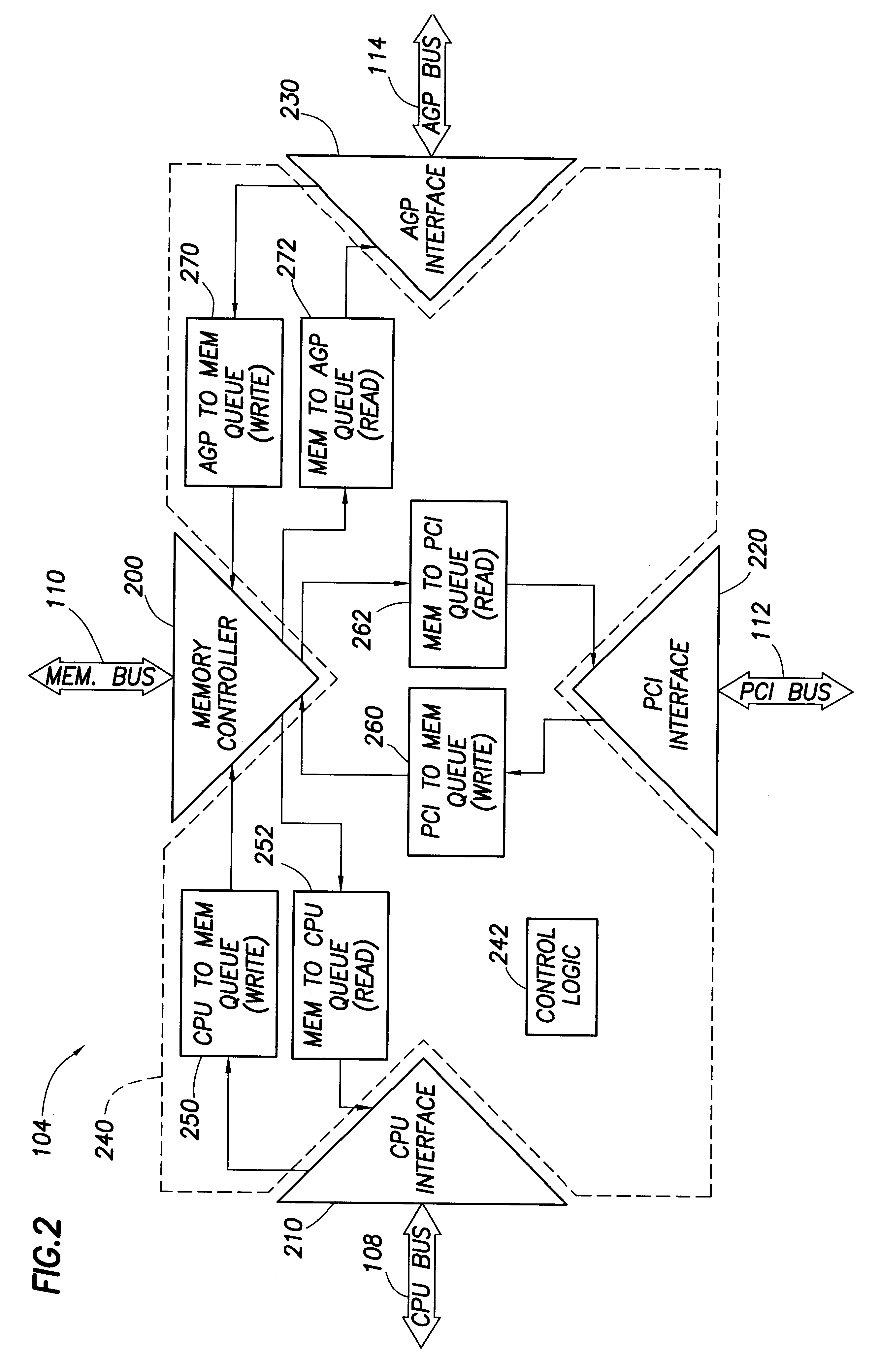Computer system with adaptive memory arbitration scheme
a memory arbitration and computer system technology, applied in computing, data conversion, instruments, etc., can solve problems such as inability of memory controllers to grant access to lower-ranking devices, inability to achieve fixed-priority memory arbitration techniques for real-time applications, and poor performance of these applications
- Summary
- Abstract
- Description
- Claims
- Application Information
AI Technical Summary
Benefits of technology
Problems solved by technology
Method used
Image
Examples
Embodiment Construction
Referring now to FIG. 1, a computer system 100 constructed in accordance with a preferred embodiment generally includes a central processing unit ("CPU") 102 coupled to a variety of system components through an integrated bridge logic (or "North bridge") unit 104. The CPU 102 couples to the North bridge 104 via a CPU bus 108. An external cache memory unit 109 may further be coupled to CPU bus 108. As shown, a main memory 106 couples to the North bridge 104 through a memory bus 110, and a graphics controller 116 couples to the North bridge 104 through any suitable graphics bus 114, such as an Advanced Graphics Port ("AGP") bus. A display device 118 couples to the graphics controller 116. Additionally, a plurality of Peripheral Component Interconnect ("PCI") devices 120 couple to the North bridge 104 through a PCI bus 112.
A secondary bridge (or "South bridge") logic unit 122 also may be provided to accommodate an electrical interface to one or more peripheral devices 124 by way of an ...
PUM
 Login to View More
Login to View More Abstract
Description
Claims
Application Information
 Login to View More
Login to View More - R&D
- Intellectual Property
- Life Sciences
- Materials
- Tech Scout
- Unparalleled Data Quality
- Higher Quality Content
- 60% Fewer Hallucinations
Browse by: Latest US Patents, China's latest patents, Technical Efficacy Thesaurus, Application Domain, Technology Topic, Popular Technical Reports.
© 2025 PatSnap. All rights reserved.Legal|Privacy policy|Modern Slavery Act Transparency Statement|Sitemap|About US| Contact US: help@patsnap.com



